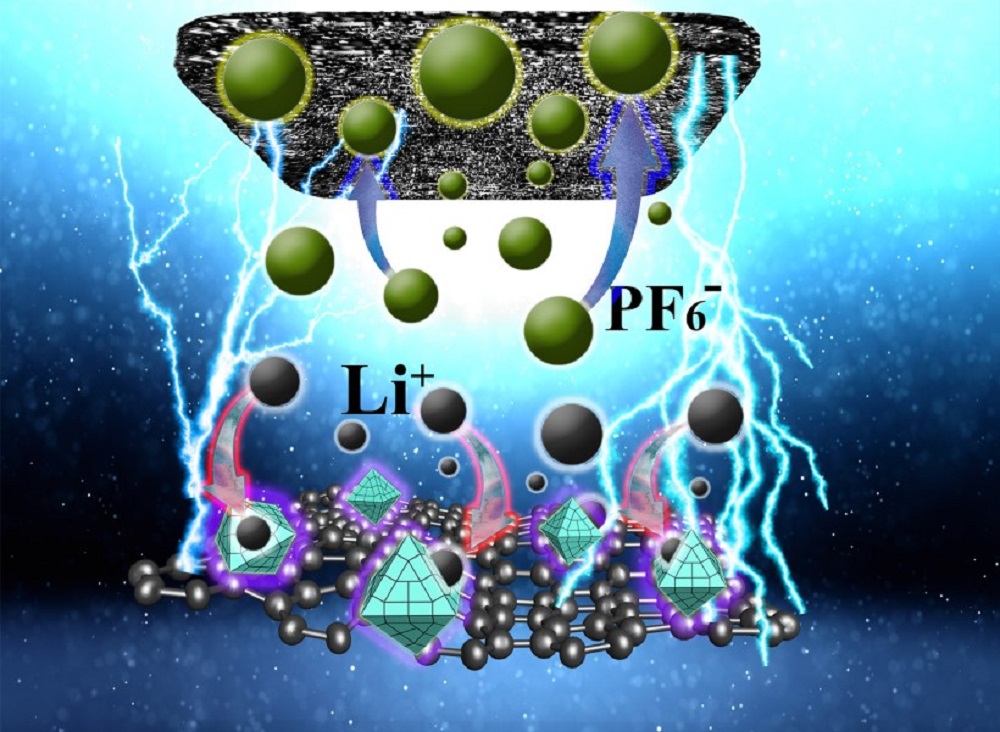From Fig. 1(a), CS-CoS
2 shows a regular octahedral structure, which is formed owing to the crystal preferential growth on the {111} facet with the lowest energy [
19]. The morphology of CS-CoS
2@rGO presents small spherical clusters formed by several octahedral nanocrystals anchored on graphene sheets (Fig. 1(b)). The steric hindrance of graphene sheets is the dominant factor of a substantial reduction of the size of the crystals from CS-CoS
2 to CS-CoS
2@Rgo [
16]. Therefore, the ion diffusion path of CS-CoS
2@rGO should be much shorter, which means faster ion diffusion and reaction kinetic [
15,
16]. The morphology of CoS
2@rGO is comparable to CS-CoS
2@rGO (Figs. 1(b) and 1(c)). As shown in Figs. 1(d) and 1(e), the calculated d-spacing of (111) plane and (220) plane of CS-CoS
2 and CS-CoS
2@rGO are 0.341 and 0.216 nm, respectively. They are slightly larger than the standard d-spacing of cobalt sulfide (JCPDS NO.70-2865), where (111) plane should be 0.319 nm, and (220) plane should be 0.195 nm [
10]. What is noteworthy is that the same two planes d-spacing of CoS
2@rGO did not increase in Fig. 1(f). The increase of interplanar spacing may stem from the interstitial incorporation of carbon during the hydrothermal process [
13]. The carbon doping should be resulting from the pyrolysis of L-cysteine during hydrothermal and can be further proved by other subsequent characterizations [
9]. The EDS maps of CS-CoS
2@rGO in Fig. 1(g) demonstrate that sulfur and cobalt elements are uniformly distributed. The distribution of the carbon element in the cobalt sulfide crystal range is more than that of the graphene matrix (Fig. 1(g)). Besides, the C element content analyzed by EDS in CS-CoS
2 is 8.58 at% (Table S1, cf. Electronic Supplementary Material, ESM). Based on the EDS analysis results, it can be inferred that the C element is doped into CS-CoS
2 as well as CS-CoS
2@rGO. The XRD, Raman spectrum, TG curve, and elemental composition information of these three materials are shown in Fig. 2. It can be seen from the XRD patterns in Fig. 2(a) that the diffraction peaks of CS-CoS
2, CS-CoS
2@rGO, and CoS
2@rGO are all in line with the standard card of CoS
2 crystals (JCPDS NO.70-2865). Remarkably, the (111) peak of CS-CoS
2 and (220) peak of CS-CoS
2@rGO both shows a slight shift of approximately 0.5° to the lower degrees, which also occurred to varying degrees on the other diffraction peaks of these two samples. The (111) interplanar spacing of CS-CoS
2 and (220) of CS-CoS
2@rGO calculated accurately by the Bragg Equation are 0.338 nm and 0.213 nm, respectively, which are correspond to the results of the TEM measurement. It should be the interstitial doping of carbon that leads to such diffraction peaks shift [
20]. Also, there are no prominent diffraction peaks of graphite in the XRD patterns of CS-CoS
2 and CS-CoS
2@rGO, which may be due to the low content of doped carbon and the low crystallinity of rGO, respectively [
21].










